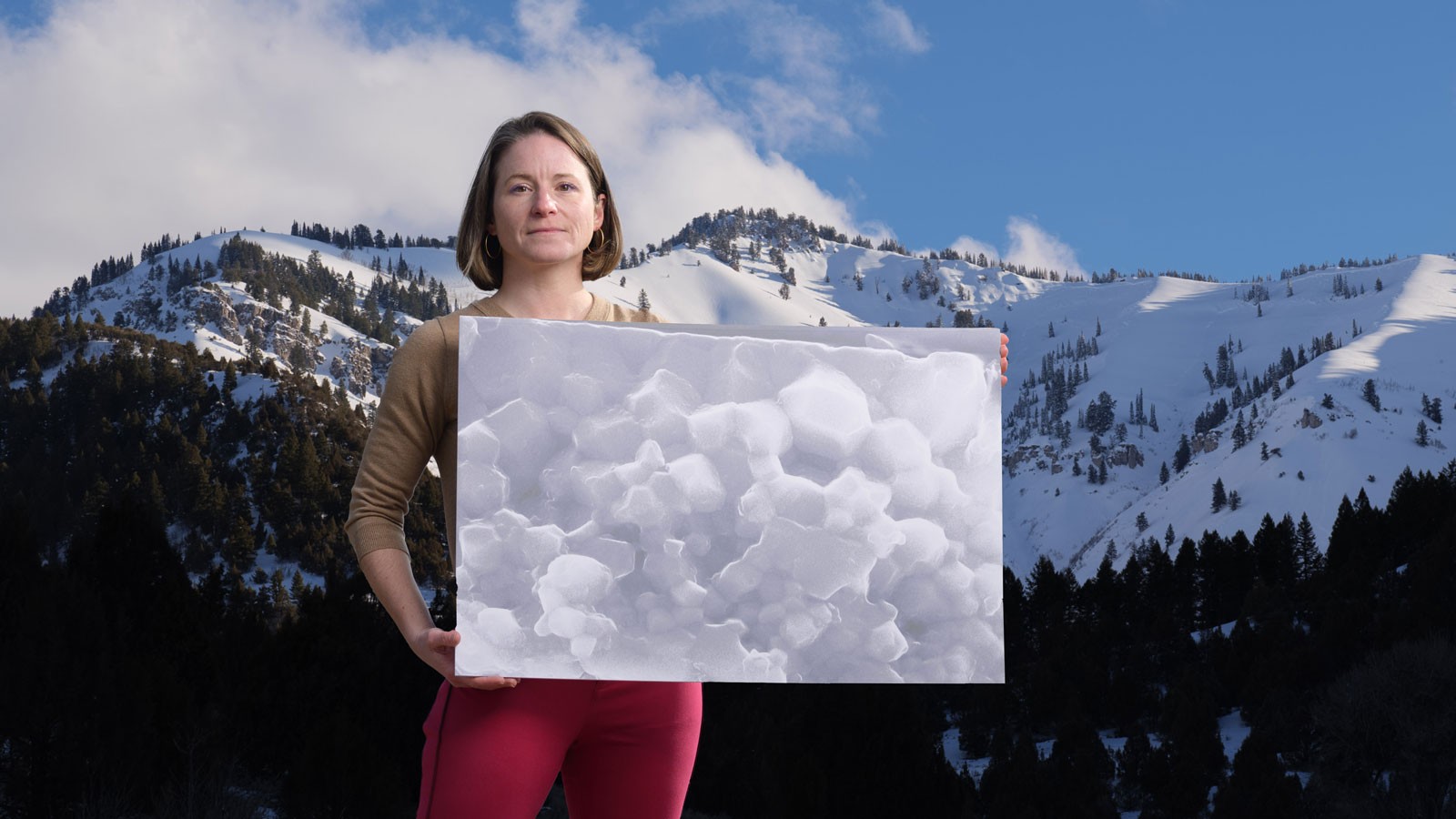Utah State Magazine Excerpt: Stitching Together an Ancient Story
By Kristen Munson |
Alexis Ault, associate professor of geology, shows the microcrystalline texture of hematite that formed when a fault moved. It's only visible with a scanning electron microscope. Photo by Casey McFarland.
This is an excerpt from Utah State Magazine's Spring 2022 edition, out now, with the theme "Tiny Things, Big Impact." The full article is available on the magazine's website, utahstatemagazine.usu.edu.
The machine hisses like a bike tube deflating.
“First we need to let the air out,” says Fen-Ann Shen, adjusting a valve on the scanning electron microscope (SEM) to create a vacuum inside. The 7,000-pound instrument parked in the basement of the Science Engineering Research building is worth more than many American homes.
With gloved hands, Shen, manager of Utah State University’s Core Microscopy Facility, plucks a sample from a shelf of gold nanoparticles on a carbon plate that resembles a typewriter key no longer in use. She tilts it forward and the disc flashes in the light.
“I am going to show you inside this,” she says.
The SEM uses a beam of electrons to scan the surface of samples down to the atomic level, revealing topography the human eye could never detect. The experience is akin to flying over farmland at 40,000 feet and seeing the latticework of roads and fields below.
“Our vision sees down to 100 microns,” Shen says, adjusting knobs for magnification and tuning the focus.
Fine details emerge showing the structure of the gold nanoparticles. At 200,000 times magnification, they look like pebbles on a beach, revealing how our eyes can be unreliable narrators of the world. Afterward Shen combs the shelf for a piece of hematite about a centimeter wide that shimmers like a shard from a mirror.
“This is Alexis’s,” she says. “From a small sample, she can discover a lot.”
Piecing Together a Story
The Alexis that Shen is referring to is Associate Professor of Geology Alexis Ault, a pioneer of new thermochronology tools she uses to study fault surfaces down to nanoscale and even atomic levels. Her work stitches together a fault’s earthquake history and the mechanisms of rock deformation, which can help scientists better understand geographic threats in a region.
WRITER
Kristen Munson
Managing Editor
Utah State Magazine
kristen.munson@usu.edu
CONTACT
Alexis Ault
Associate Professor
Department of Geosciences
757-784-6452
alexis.ault@usu.edu
TOPICS
Research 881stories Geosciences 74storiesComments and questions regarding this article may be directed to the contact person listed on this page.







